Komatsu PC270LC-7L Excavator Service Manual
$34.00
This comprehensive Shop Manual spans 835 pages, providing in-depth guidance for maintaining and repairing the Komatsu PC270LC-7L Excavator.
Specifications:
Shop Manual for Excavator
Product Overview
This comprehensive shop manual provides the essential technical information required for performing various services in a workshop setting. It is meticulously organized into multiple sections to facilitate ease of use and understanding, ensuring that you have all the detailed guidance necessary for working with excavators.
Composition of the Shop Manual
The manual is structured to cover all aspects from general specifications to intricate troubleshooting procedures. Here is a breakdown of its contents:
-
00. Foreword
Includes fundamental safety information and basic guidelines essential for using the manual effectively.
-
01. General
Details the technical specifications of the excavator machines, crucial for understanding their capabilities and limitations.
-
10. Structure and Function, Maintenance Standard
- Structure and Function: Provides an in-depth explanation of each component’s structure and operation, serving as a valuable reference for troubleshooting.
- Maintenance Standards: Outlines the criteria and procedures for disassembly and servicing various parts.
-
20. Testing, Adjusting, and Troubleshooting
- Standard Value Table: Offers a comprehensive list of standard values for new machines and criteria for evaluating components during testing and troubleshooting.
- Testing and Adjusting: Describes the instruments and methods for measurement, including standard values and criteria necessary for making adjustments.
- Troubleshooting: Guides you in identifying and repairing faulty parts by outlining troubleshooting methods categorized by failure modes. Specific guidance for engine-related issues might be detailed in separate volumes.
-
30. Disassembly and Assembly for Excavator
Details the tools, procedures, and precautions for removing, installing, and assembling components along with necessary torque settings and fluid requirements.
-
90. Others (Chassis Volume)/Repair and Replacement of Parts (Engine Volume)
- Chassis Volume: Provides hydraulic and electrical circuit diagrams.
- Engine Volume: Explains methods for reproducing, repairing, and replacing parts.
Troubleshooting Without User Code Display
In scenarios where there is neither a User Code display nor a failure history available on the monitor panel, potential undiagnosed failures may exist within the electrical, hydraulic, or mechanical systems. It is recommended to thoroughly reexamine the phenomenon, identify the most similar issue from the “Failure-like Phenomena and Troubleshooting No.” section, and proceed with the E mode or H mode troubleshooting relevant to the observed issue.
Only logged in customers who have purchased this product may leave a review.

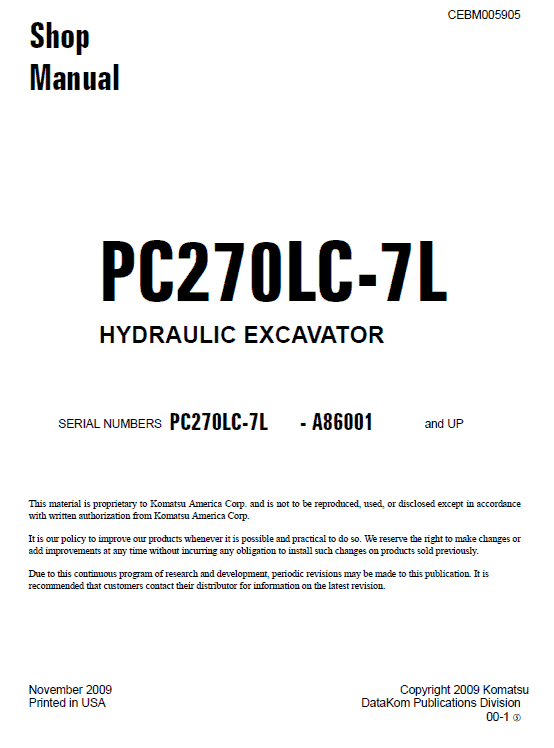
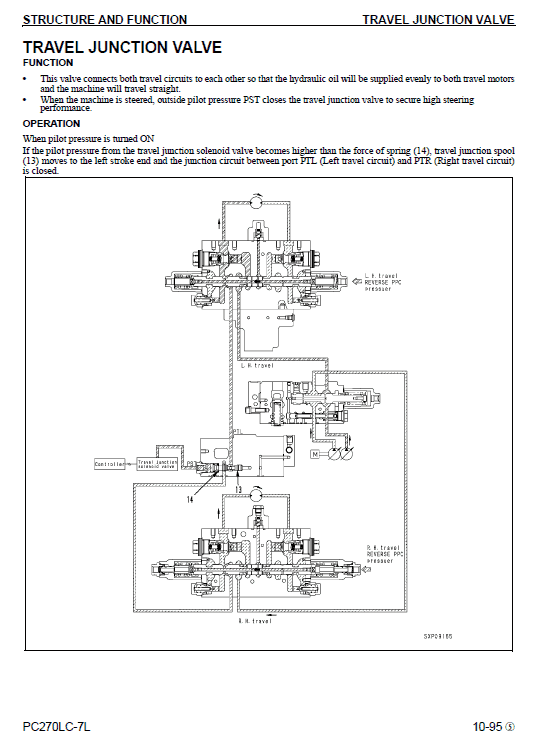

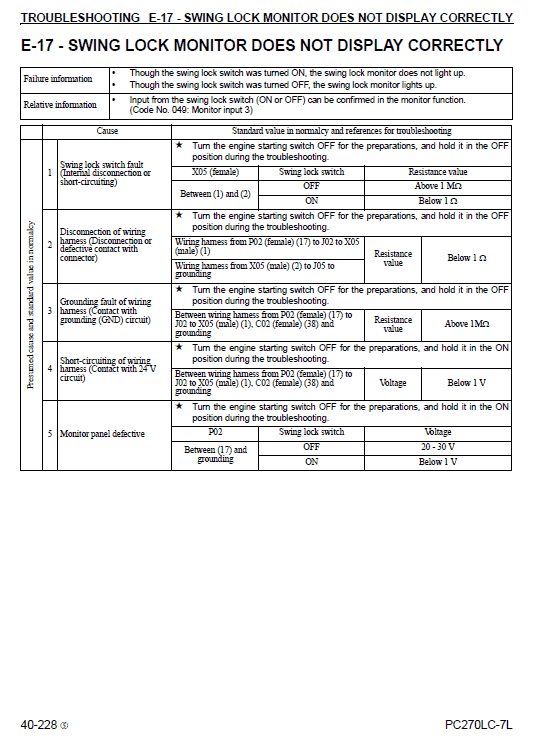

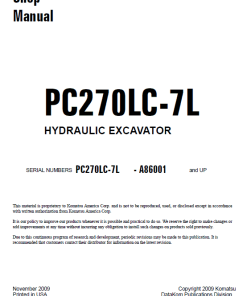
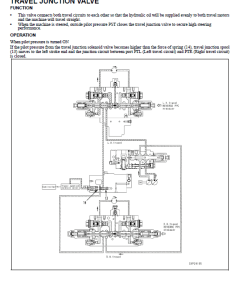
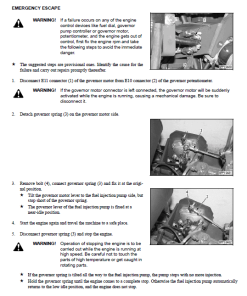




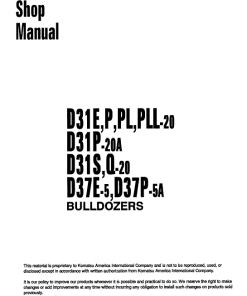
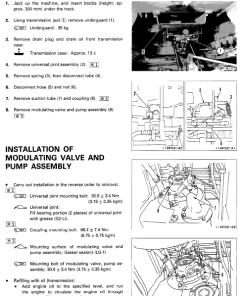
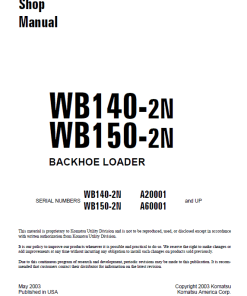
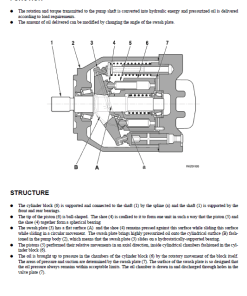
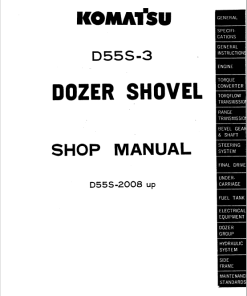
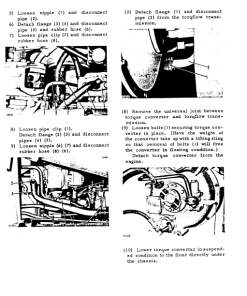
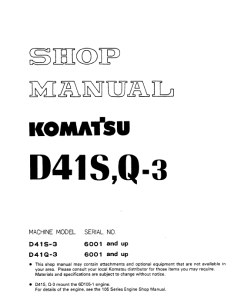
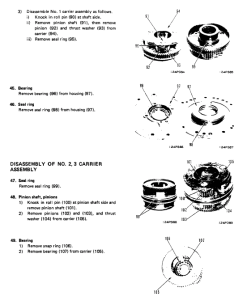
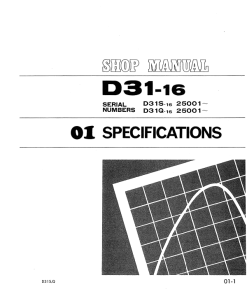
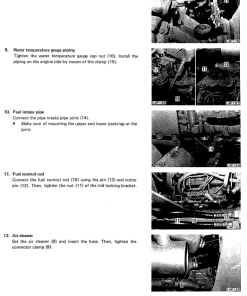
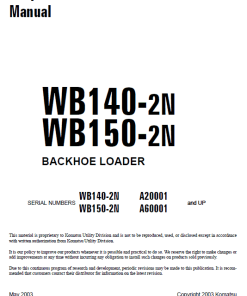
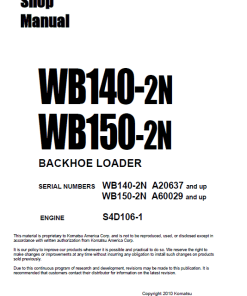
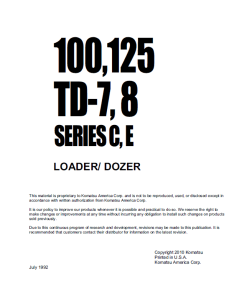
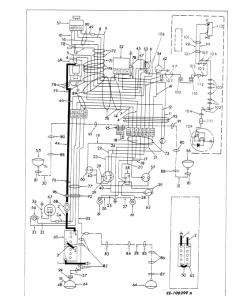
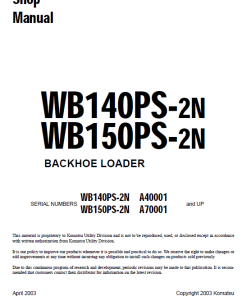

Reviews
There are no reviews yet.